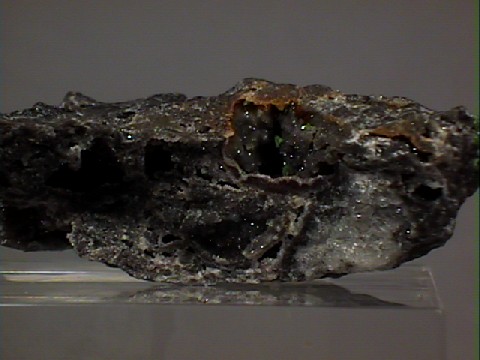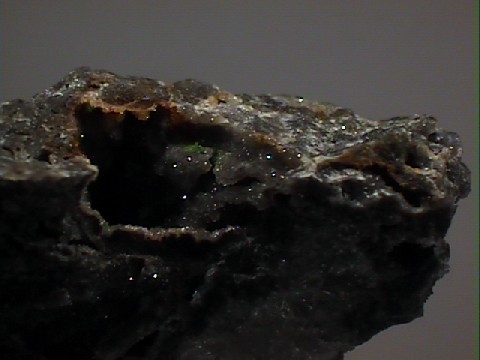 THE
MINERAL DUFTITE
THE
MINERAL DUFTITE
- Chemistry: (Pb, Ca)(Cu, Zn)AsO4(OH), Lead Calcium Copper Zinc Arsenate Hydroxide
- Class: Phosphate Class
- Subclass: Arsenates
- Group:
Adelite - Uses: Only as mineral specimens
Specimens
Duftite is an oxidation product of weathered ore deposits. It is often associated with other beautiful and/or rare oxidation minerals. The formula is typically written without the calcium and zinc as these elements are not always a significant percentage of the mineral.
The color of duftite gives it its great note of distinction. The color is usually an attractive green of one shade or another. It seems that the color is often difficult to label and is given a variety of pleasant names. It has been described as pea-green, apple-green, gray-green, olive-green, lime green and dark green. Whatever the shade, it usually is quite attractive and a joy to possess in one's collection.
PHYSICAL CHARACTERISTICS:
- Color is olive-green, gray-green or simply green.
- Luster is vitreous.
- Transparency: Crystals are transparent to translucent.
- Crystal System is Orthorhombic.
- Crystal Habits include microcrystalline crusts and small tabular crystals.
- Cleavage is indistinct.
- Fracture is uneven.
- Hardness is 3.
- Specific Gravity is approximately 6.4 - 6.6 (heavy for translucent minerals)
- Streak is white.
- Associated Minerals include
wickenburgite , diopside, quartz, shattuckite, crocoite, ajoite, minium, cerussite, azurite, calcite, wulfenite and malachite. - Notable Occurrence include Tsumeb, Namibia; E-Z Mine, Puttapa, Australia and Maricopa, County, Arizona, USA.
- Best Field Indicators are crystal habit, color, density, non-colored streak and localities.



